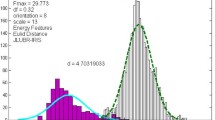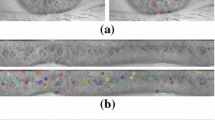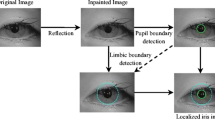Abstract
A new iris feature extraction approach using both spatial and frequency domain is presented. Steerable pyramid is adopted to get the orientation information on iris images. The feature sequence is extracted on each sub-image and used to train Support Vector Machine (SVM) as iris classifiers. SVM has drawn great interest recently as one of the best classifiers in machine learning, although there is a problem in the use of traditional SVM for iris recognition. It cannot treat False Accept and False Reject differently with different security requirements. Therefore, a new kind of SVM called Non-symmetrical SVM is presented to classify the iris features. Experimental data shows that Non-symmetrical SVM can satisfy various security requirements in iris recognition applications. Feature sequence combined with spatial and frequency domain represents the variation details of the iris patterns properly. The results in this study demonstrate the potential of our new approach, and show that it performs more satisfactorily when compared to former algorithms.
Similar content being viewed by others
References
Adler, F.H., 1965. Physiology of the Eye. Mosby, St. Louis, MO.
Chaudhuri, B.B., Sarkar, N., 1995. Texture segmentation using fractal dimension.IEEE Transactions on Pattern Analysis and Machine Intelligence,17(1):72–77.
Daugman, J.G., 1993. High confidence visual recognition of persons by a test of statistical independence.IEEE Transactions on Pattern Analysis and Machine Intelligence,15(11):1148–1161.
DeCoste, D., Scholkopf, B., 2002. Training invariant support vector machines.Machine Learning,46(1–3):161–190.
Gu, H.Y., Pan, H., Wu, F., Zhuang, Y.T., Pan, Y.H., 2004. The research of iris recognition based on self-similarity.Journal of Computer-Aided Design & Computer Graphics,16(7):973–977 (in Chinese).
Joachims, T., 1998. Text Categorization with Support Vector Machine. Proceedings of European Conference on Machine Learning (ECML), Springer-Verlag.
Ma, L., Wang, Y.H., Tan, T.N., 2002. Iris recognition based on multichannel Gabor filtering.Proc. 5th Asian Conf. Computer Vision, (1):279–283.
Osuna, E., Freund, R., Girosi, F., 1997. Training Support Vector Machines: An Application to Face Detection. Proceedings of the 1997 conference on Computer Vision and Pattern Recognition (CVPR’97), Puerto Rico.
Simoncelli, E.P., 1996. A rotation-invariant pattern signature.IEEE International Conference on Image Processing, (III):185–188.
Simoncelli, E.P., Freeman, W.T., 1995. The steerable pyramid: A flexible architecture for multi-scale derivative computation.2nd IEEE International Conference on Image Processing, (III):444–447.
Vapnik, V.N., 1998. Statistical Learning Theory. J. Wiley, New York.
Wildes, R.P., 1997, Automated iris recognition: An emerging biometric technology.Proceedings of the IEEE,85 (9):1348–1363.
Author information
Authors and Affiliations
Additional information
Project supported by the National Natural Science Foundation of China (No. 60272031), Educational Department Doctor Foundation of China (No. 20010335049), and Zhejiang Provincial Natural Science Foundation (No. ZD0212), China
Rights and permissions
About this article
Cite this article
Hong-ying, G., Yue-ting, Z. & Yun-he, P. An iris recognition method based on multi-orientation features and Non-symmetrical SVM. J. Zheijang Univ.-Sci. A 6, 428–432 (2005). https://doi.org/10.1631/jzus.2005.A042
Received:
Revised:
Published:
Issue Date:
DOI: https://doi.org/10.1631/jzus.2005.A042
Key words
- Iris recognition
- Steerable pyramid
- Variation fractal dimension
- Non-symmetrical Support Vector Machine (NSVM)




